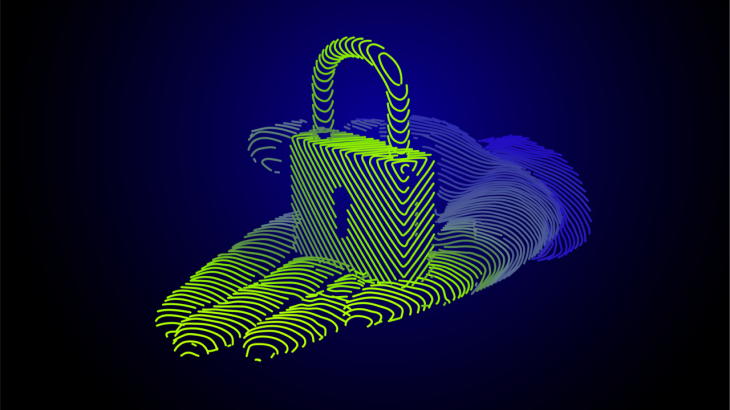
Exploring PAM Deployment Options and Choosing Between SaaS and On-Premise Solutions
Privileged Access Management (PAM) stands at the forefront of modern cybersecurity strategies, safeguarding critical systems and data from unauthorized access. As organizations strive to fortify their defenses against evolving cyber threats, the choice of PAM deployment becomes increasingly crucial. In today's dynamic landscape, where flexibility, scalability, and security are paramount, understanding the various deployment options is essential for making informed decisions.
In this comprehensive blog post, we embark on a journey through the realm of PAM deployment, unraveling the intricacies of on-premise and Software as a Service (SaaS) solutions. We'll delve into the distinctive characteristics, benefits, and potential challenges associated with each deployment model, empowering you to navigate the PAM landscape with confidence.
Join us as we explore the diverse deployment options available to organizations, and weigh the pros and cons of SaaS versus on-premise deployments. Whether you're a seasoned cybersecurity professional seeking to enhance your organization's defenses or a business leader tasked with making strategic IT decisions, this guide will provide valuable insights to inform your PAM deployment strategy. Let's embark on this enlightening journey together, unlocking the secrets to effective privileged access management in the digital age
What Are the PAM Deployment Options?
-
On-Premises with support for connections to Cloud Applications
- In this deployment option, the PAM solution is installed and hosted within the organization's own infrastructure or data center, commonly referred to as on-premises.
- The PAM solution is capable of integrating and connecting with cloud-based applications and services. This allows organizations to manage privileged access not only to their on-premises systems but also to their cloud-based resources.
- This option provides organizations with the flexibility to maintain control over their infrastructure while extending their privileged access management capabilities to the cloud.
-
Hybrid Model - One instance on-premises and the other on customer’s private cloud
- This deployment model combines aspects of both on-premises and private cloud deployment.
- One instance of the PAM solution is hosted within the organization's on-premises infrastructure, providing control and security over internal systems.
- Another instance is hosted within the customer's private cloud environment, which might be managed by a third-party service provider or by the organization itself.
- This hybrid approach allows organizations to leverage the benefits of both on-premises and private cloud environments, catering to specific security, compliance, and operational requirements.
-
SaaS Model for customers wanting a “pure SaaS” option
- This deployment option involves the PAM solution being offered as a Software as a Service (SaaS) platform.
- The entire PAM solution is hosted and managed by the vendor in the cloud, and customers access it over the internet through a subscription-based model.
- With this option, customers don't need to worry about managing infrastructure, updates, or scalability; the vendor handles all of these aspects.
- It provides ease of deployment, flexibility, and scalability for organizations that prefer a pure cloud-based solution without the overhead of maintaining on-premises infrastructure.
-
Private Cloud Deployment for MSP and MSSP offerings
- In this deployment option, the PAM solution is hosted within a private cloud environment.
- The private cloud infrastructure might be owned and operated by a Managed Service Provider (MSP) or a Managed Security Service Provider (MSSP).
- This option is particularly suitable for organizations that want the benefits of cloud-based deployment but require a dedicated and secure environment, such as those with stringent compliance requirements or concerns about data sovereignty.
- It allows MSPs and MSSPs to offer privileged access management services to their clients in a scalable and customizable manner.
Each of these deployment options caters to different organizational needs, preferences, and constraints, providing flexibility and scalability in implementing privileged access management solutions.
Below is a comparison of On-Premise and SaaS deployment options across various parameters:
On-Premise:
|
Aspect |
Pros |
Cons |
|
Hardware |
- Organizations have full control over hardware specifications and configurations. |
- Requires upfront investment in hardware procurement and maintenance. |
|
IT Staff |
- Allows organizations to utilize existing IT staff for management and maintenance. - Provides direct control over all aspects of the deployment. |
- Requires dedicated IT staff for ongoing management, troubleshooting, and support. - May face challenges in hiring and retaining skilled IT personnel. |
|
Maintenance |
- Organizations have full control over maintenance schedules and procedures. |
- Maintenance tasks, such as software updates and patches, require dedicated IT resources. - May experience downtime during maintenance windows. |
|
Training |
- Allows for customized training programs tailored to the organization's specific deployment. - Can provide hands-on training using the actual infrastructure. |
- Requires investment in training materials, resources, and dedicated training sessions. - Training programs may be time-consuming and resource-intensive. |
|
Patches & Upgrades |
- Organizations have full control over the timing and execution of patches and upgrades. - Can test patches and upgrades in a controlled environment before deployment. |
- Patches and upgrades require dedicated IT resources for planning, testing, and implementation. - May experience downtime during patching and upgrading processes. |
|
Downtime |
- Organizations have more control over minimizing downtime through careful planning and scheduling of maintenance activities. |
- Downtime may occur during maintenance windows or in the event of hardware failures or software issues. |
|
Performance Tuning |
- Organizations have full control over performance tuning parameters and configurations. -Can optimize performance based on specific workload requirements. |
- Requires expertise and resources for continuous monitoring and tuning of performance. - Performance tuning may require downtime or service interruptions. |
|
Security |
- Provides organizations with full control over security measures and configurations. - Allows for customization of security policies and enforcement mechanisms. |
- Security is reliant on the organization's internal expertise and resources. - May face challenges in keeping up with evolving security threats and best practices. |
|
Network |
- Organizations have full control over network infrastructure and configurations. - Can implement security measures tailored to their specific network environment. |
- Requires investment in network hardware, bandwidth, and security appliances. - Maintenance and troubleshooting of network issues are the responsibility of the organization. |
SaaS:
|
Aspect |
Pros |
Cons |
|
Hardware |
- No need for organizations to invest in or manage hardware. - Scalability is typically handled by the service provider. |
- Reliant on the service provider's hardware infrastructure. - Limited control over hardware specifications and configurations. |
|
IT Staff |
- Minimal IT staff required for deployment and maintenance, as most tasks are handled by the service provider. - Allows organizations to focus their IT resources on core business activities. |
- Dependency on the service provider for technical support and troubleshooting. - Limited control over deployment and customization options. |
|
Maintenance |
- Service provider handles maintenance tasks, including updates and patches, reducing the burden on internal IT staff. - Updates and patches are typically applied seamlessly without causing downtime for users. |
- Limited control over maintenance schedules and procedures. - Organizations rely on the service provider to ensure timely and effective maintenance. |
|
Training |
- Service provider may offer standardized training materials and resources as part of the subscription package. - Training can be conducted remotely, reducing travel and logistical costs. |
- Limited ability to customize training programs to meet specific organizational needs. - Training effectiveness may vary depending on the quality of the provided materials. |
|
Patches & Upgrades |
- Service provider handles patches and upgrades, ensuring timely and seamless updates for all users. - Updates are typically applied without causing downtime for users. |
- Limited control over the timing and execution of patches and upgrades. - Organizations rely on the service provider to ensure compatibility and stability. |
|
Downtime |
- Service provider is responsible for ensuring high availability and uptime of the platform. - Redundant infrastructure and failover mechanisms are often implemented to minimize downtime. |
- Organizations may experience downtime due to issues with the service provider's infrastructure or maintenance activities. - Limited control over resolving downtime issues. |
|
Performance Tuning |
- Service provider is responsible for ensuring optimal performance of the platform. - Performance tuning is typically handled transparently by the service provider without user intervention. |
- Limited control over performance tuning parameters and configurations. - Organizations may experience performance issues due to shared infrastructure or resource contention. |
|
Security |
- Service provider is responsible for implementing and maintaining robust security measures. - Benefits from economies of scale in security infrastructure and expertise. |
- Limited visibility and control over security measures and configurations. - Organizations may have concerns about data privacy, compliance, and trust in the service provider's security practices. |
|
Network |
- Service provider is responsible for ensuring network connectivity and performance. - Relies on redundant network infrastructure and failover mechanisms to ensure availability. |
- Limited control over network configurations and optimizations. - Organizations may experience network latency or connectivity issues outside of their control. |
Overall, the choice between on-premise and SaaS deployment options depends on factors such as organizational preferences, resource availability, security requirements, scalability needs, and budget constraints. Each deployment option has its own set of advantages and challenges, and organizations should carefully evaluate their specific needs and considerations before making a decision.
Finally, Kron PAM's innovative on-premise and SaaS offering enables organizations to confidently navigate the complexities of modern cybersecurity, knowing that their critical assets are protected from evolving threats. For further information about preparing a cybersecurity audit IAM and data security solutions, feel free to contact us.
Highlights
Other Blogs

Kron Privileged Access Management (PAM) for Achieving UK’s Telecommunications Security Act TSA Compliance

Secure What Matters: How Kron DAM & DDM Elevate Sensitive Data Discovery and Protection















